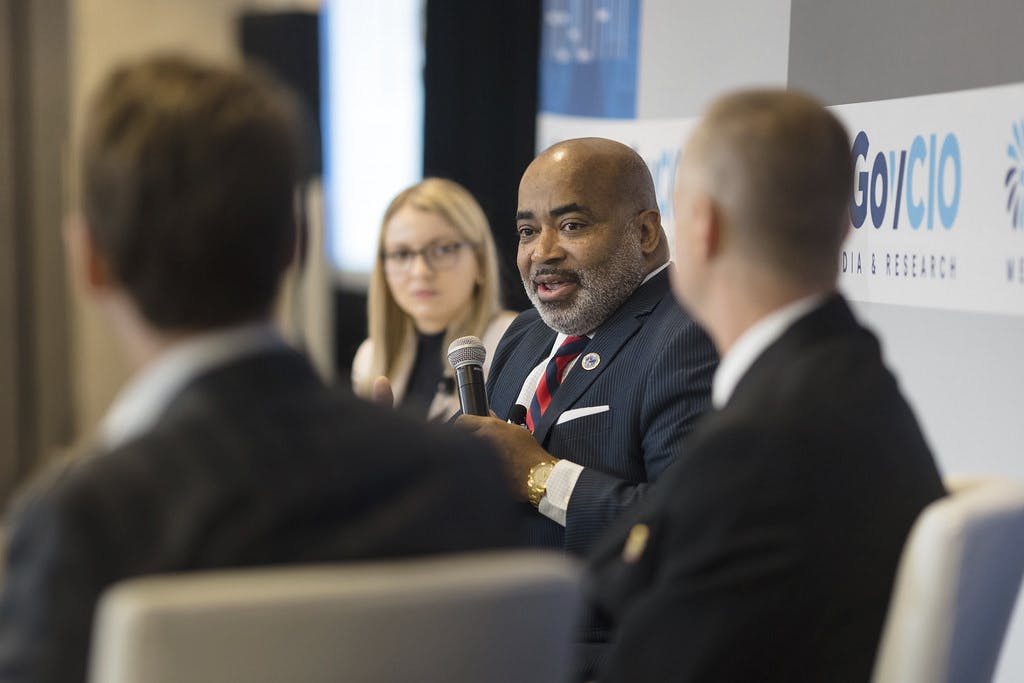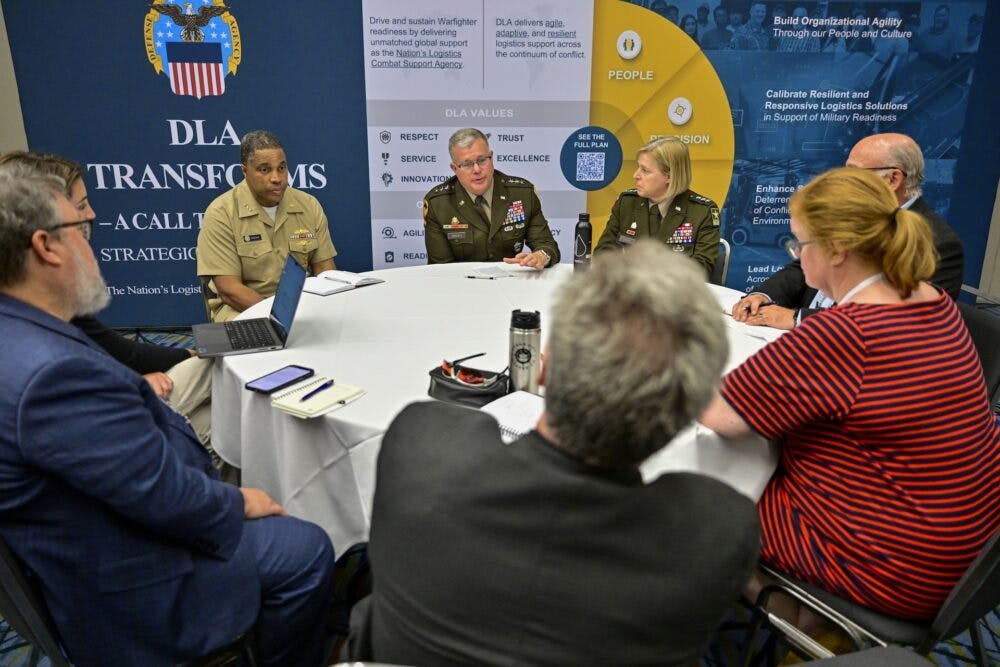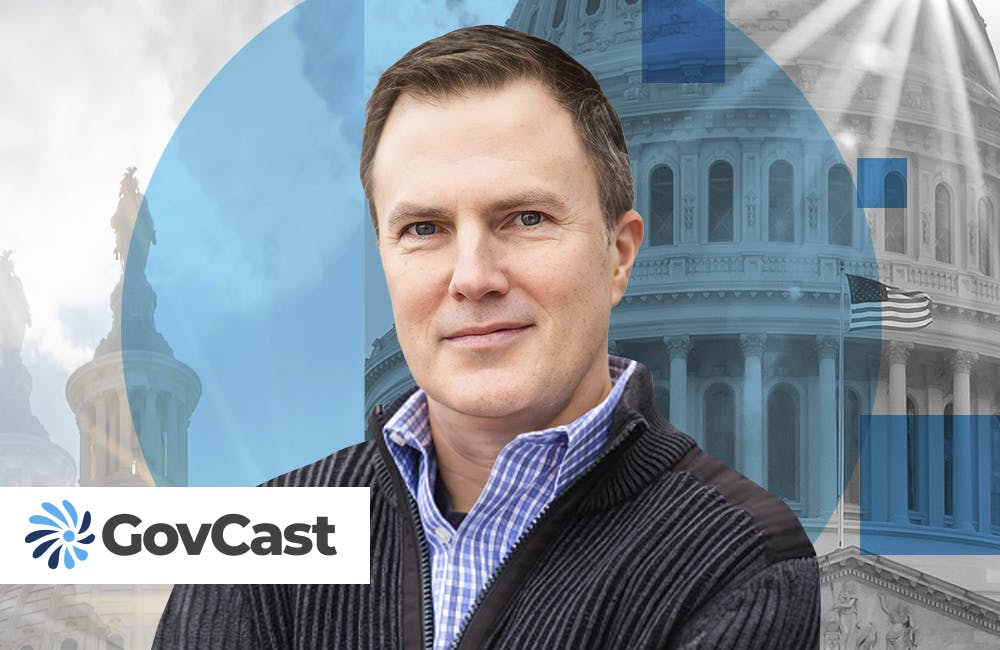Successful EHR Implementation Hinges on Change Management
Federal leaders working on the VA, DOD electronic health records reflect on managing through change.

Key change management principles in the federal effort to modernize electronic health records includes effective communication and maintaining integration with the legacy system to ensure seamless rollout and implementation.
For years, the Office of Marine and Aviation Operations at the National Oceanic and Atmospheric Administration (NOAA) had several medical programs to support its commissioned officers, but there was not a NOAA-owned EHR. That changed this summer after NOAA joined the joint EHR with the Defense Department and Coast Guard called MHS Genesis.
“We are able to now freely exchange information between our branches. … Additionally, just having that connection to the military treatment facilities was huge,” Cmdr. Scott Miller, director of the Office of Health Services at NOAA, said at the Sept. 21 Health IT Summit in Bethesda, Maryland. Miller explained the service previously relied on information that was provided from those applying to be officers. “Through health information exchange, we’re able to see much more complete pictures.”
Critical in the EHR rollout effort has been effective communication — one of the leading practices among change management principles.
“Once we got to landing on MHS Genesis and in preparing for an implementation, going back to the people component of it, communicating out information freely, frequently, to all the users, all the patients that were going to be affected, all the executive leadership just to make sure everybody was on the same level as far as what to expect,” said Miller.
John Windom, deputy director at the Federal Electronic Health Record Modernization (FEHRM) office, which is overseeing implementation of DOD’s record along with the Department of Veterans Affairs, emphasized the importance of embracing change.
“My boss Bill Tinston often says, ‘People hate the system until you tell him you’re going to change it. Then everybody likes it again.’ We wrestle with that, and we’ll continue to do so,” Windom said.
“But homing in on the people, understanding the way people learn. Everyone doesn’t learn the same way. And so, you’ve got to be resilient in many cases. You’ve got to be steadfast in your resolve because sometimes the easy thing is just to give up and go back to what you’ve been doing,” he added.
Of course, the technology component is important, particularly for VA, which will be moving from its legacy VistA system to the new Oracle-Cerner platform. Red Hat Chief Architect Ben Cushing noted the importance of a bidirectional data plane and the need to consider modernizing the existing legacy EHR.
“The existing EHR, generally, is not going to go away for quite a while. … VistA is probably going to be around for a decade or more, if not forever. … When you’re actually doing the change management or actually doing the migration, you’re going to have two EHRs or more running at the same time. And that’s a significant patient safety problem,” Cushing said. “In this case, you really need to have a bidirectional data plane so that the records themselves are available between the different systems, and that reality has to exist for quite a while. And it’s a challenge. It’s an interoperability challenge.”
Slow migration, rather than introducing major changes in one fell swoop, will also contribute to a successful EHR implementation.
“Gradual change is something that we as humans are much more adaptive to. So while you have that legacy EHR, you can slowly start to do that migration over time, and people feel much more comfortable with that, as opposed to like one day lifting the thing they know how to use and dropping something else in place right in front of them and then watch them panic because they can’t do their day job,” said Cushing.
As there are no two systems that are exactly alike, it is vital to allow the ecosystem to grow.
“Adding on other tools that do things like care coordination or … advanced analytics and AI — those are things that are not going to generally come from your EHR. Those are part of the health care ecosystem, and you want to bolt them on to create a more complex and sophisticated health system,” Cushing added.
This is a carousel with manually rotating slides. Use Next and Previous buttons to navigate or jump to a slide with the slide dots
-

New Army Acquisition Plan Cites Autonomy, Predictive Analytics
Officials outline how the Army Transformation Initiative signals a broader shift toward efficiency with tech and acquisition reform.
4m read -

DOE National Labs Launch New AI Tools for Operational Efficiency
The Energy Department's National Laboratories are using AI to increase operational efficiency and drive research efforts forward.
3m read -

VA Plans Future EHR Deployment on Facility Relationships
VA’s EHR program is expected to restart in 2026 and will plan deployment based on pre-existing relationships between facilities to drive interoperability.
21m watch -

Human-AI Collaboration is Key to Secure Government Systems
Former CIA security chief emphasizes training and international standards for effective AI implementation.
23m watch








